Tianhe mountain
Tianhe mountain
Tianhe Mountain, located in Xingtai City, Hebei Province, is China's Love Mountain, the hometown of Chinese Qixi Culture, and the birthplace of the legend of Cowherd and Weaver Girl. Tianhe Mountain is a national AAAA-level scenic spot, a national key scenic spot and a national geological park. The scenic spot stands in the greenest place of Taihang Mountain at the junction of Shanxi and Hebei, with a total area of 30 square kilometers.
Tianhe Mountain is 50 kilometers away from Xingtai City, far from the noise of the city, where Qifeng is forested, valleys are graceful, vegetation is abundant, and trees are lush; waterfalls and snowfalls, clear springs and zither singing, water is abundant, is the famous "Taihang Water Town"; Songtao battle, cattle and sheep flock, also known as the "Yunding Grassland". As early as the Neolithic Age, the Tianhe Mountains were inhabited by human beings. During the Anti-Japanese War, Tianhe Mountain was one of the main bases of the Eighth Route Army. The 129 Division Hospital and the Revolutionary Sites of the Bank of South Hebei (the predecessor of the People's Bank of China) are well preserved.
The story of Cowherd and Weaver Girl is widely spread in Tianhe Mountains, and there are a lot of cultural relics. This is the birthplace of the story of Cowherd and Weaver Girl, which has been verified by many experts. In 2005, Tianhe Mountain was registered as "China Love Mountain" by the State Administration of Industry and Commerce. In 2006, Tianhe Mountain was named "Qixi Cultural Research Base" by the Chinese Folklore Society and "Qixi Cultural Town" by the Chinese Folk Literature and Art Association. In 2015, Tianhe Mountain Ice and Snow World, the first mountain skiing resort in Central Plains of China, was built.
Scenic spots
The story of Cowherd and Weaver Girl is widely spread in Tianhe Mountains, and there are a lot of cultural relics. This is the birthplace of the story of Cowherd and Weaver Girl, which has been verified by many experts. In 2005, Tianhe Mountain was registered as "China Love Mountain" by the State Administration of Industry and Commerce. In 2006, Tianhe Mountain was named "Qixi Cultural Research Base" by the Chinese Folklore Society and "Qixi Cultural Town" by the Chinese Folk Literature and Art Association.
Tianhe Mountain Scenic Area is a national AAAA level scenic spot, a national key scenic spot and a national geological park.
In 2015, Tianhe Mountain Ice and Snow World, the first mountain skiing resort in Central Plains of China, was built.
Tianhe Mountain is a dazzling pearl in Taihang, a thousand miles away. The main attractions are: Hanque Gate, Lotus Fragrance Garden, Yingbin Dam, Tianhe Lake, Love Square, Yuanyangchi, Lingbo Lake, Dishengu Valley, Lingshui Lake, Nine-day Galaxy, Tianmen, Bilian Pool (Pot Cave), Waterlily Pool, Valley of Lovers, Niulangzhuang, Xianren Peak, Queqiao, Yueliao Peak, Notre Dame Temple, Fuziyan, Yunding Grassland, the first in the world, etc.
Ice and snow world
Tianhe Mountain Ice and Snow World is located on the top of China's Love Mountain, 1496 meters above sea level, with a total area of 80,000 square meters.
Ice and Snow World is located at the junction of Shanxi Province, Hebei Province, 70 kilometers east of Xingtai City, 34 kilometers west of Heshun County Town, convenient transportation, high-speed direct access (under Qiaozhuangkou Xingfen Expressway). Around ten thousand mu of pine forests, there is a magnificent scene of forest, sea and snow plain. There are also unique scenery such as cloud sea, sunrise, forest, Buddha light and so on. It is a rare comprehensive tourist area for sightseeing, sports and fitness, leisure and vacation, and business meetings in southern Hebei.
The snow cover period is from the end of November to the end of March of next year. The snow cover thickness is more than 50 centimeters. With artificial snowfall system, the winter skiing period is prolonged. The ski resort can accommodate 2,000 people skiing at the same time. There are also all-terrain snowmobiles, serpentine sleds, snowboards, flying saucers, children's sleds and so on, forming more than ten kinds of snowfield recreational projects.
Traffic information
geographical position
Tianhe Mountain is more than 50 kilometers away from Xingtai City, with convenient transportation.
(1) You can take a direct flight to Shijiazhuang, then take a bus to Xingtai and then transfer to Xingtai-Tianheshan special line car to the scenic spot.
(2) You can take the train directly to the downtown area of Xingtai, and then take the Xingtai-Tianheshan special line train to the scenic spot at Xingxi Bus Station. The special train starts at 7:30 a.m., and leaves at half an hour. The last bus to the scenic spot takes 3:40.
(3) Driving from Xingtai exit of Beijing-Shenzhen Expressway to Xingzuo Highway (S323 Provincial Highway) from the west along the intersection of Xingtai North Outer Ring Expressway, 50 kilometers later to the scenic spot.
(4) Xingfen (Donglu) high-speed through scenic spots.
Driving line
The eastern direction of the city (with Xingtai as the center): 1. Shandong Province direction: the provincial cities (Jinan, Liaocheng and other Southeast directions) - Qingyin Expressway (Xingtai direction) - Xinglin Expressway - Xingfen Expressway (under Luokou Road) - Xingzuo Highway (driving 17 kilometers) - China's love mountain scenic spot.
Southern Direction City (Xingtai City as the center): 1. South Xingtai City - 107 National Highway - Dongmazhuang Xingfen Expressway (under Luluokou) - Xingzuo Highway (driving 17 kilometers) - China Love Mountain Scenic Area. (2) The city south of Xingtai - Jing-Hong Kong-Macao Expressway - Xingfen Expressway (under Luokou Road) - Xingzuo Highway (driving 17 kilometers) - China Love Mountain Scenic Area.
City in the west direction (centering on Xingtai City): 1. Shanxi Province direction: Taichang Expressway - Yushe - Zuoquan - Xingzuo Highway - China Love Mountain Scenic Area (out of Shanxi Province boundary).
North-facing cities (centering on Xingtai City): 1. North-facing cities of Xingtai - Beijing-Hong Kong-Macao Expressway - Xingfen Expressway (under Luokou Road) - Xingzuo Highway (driving 17 kilometers) - China Love Mountain Scenic Area. (2) The city north of Xingtai - Jing-Hong Kong-Macao Expressway (Neiqiu South) - Xingheng Expressway (driving westward) - Xingfen Expressway (under Luluokou) - Xingzuo Highway (driving 17 kilometers) - China's Love Mountain Scenic Area.
Tianjin Directional City: Tianjin - Daguang Expressway - Xingheng Expressway (driving westward) - Xingfen Expressway (under Luluokou) - Xingzuo Highway (driving 17 km) - China Love Mountain Scenic Area.
Practical information
Opening Hours
7:00-19:00
Ticket information
Adult tickets are 70 yuan per ticket per person.
35 yuan per ticket per student;
Off season: 50 yuan per person per year (December 1-February 28)
Notes for ticket purchase: 1. Opening time of scenic spots: 24 hours (it is recommended that tourists visit scenic spots before 18:00 is the best)
(2) Children: No ticket for height below 1.2 meters, and student tickets for height above 1.2 meters with student certificate.
Old age: Older people over 60 years old buy old age tickets at half price with ID card, and older people over 70 years old are free of tickets.
Project price
Human CS50, Passionate Drifting 98, Climbing 50, Collision Ship 60 (RMB) One Person
Xingtai is located in the eastern foot of Taihang and the West Bank of the ancient Yellow River, and it is one of the oldest cities in Hebei Province. It is the "hometown of Chinese Qixi" culture and the "cultural research base of Chinese Qixi". Tianhe Mountain Scenic Spot is the birthplace of the legend of "Niulang and Zhinv", which includes Tianhe Liang, Lao Niuyan, Niulangzhuang, Zhinv Feng and Queqiao. Many legends about the love of Cowherd and Weaver Girl are widely spread among the local people. Folk culture is rich in resources. It is a wonderful flower in the excellent history and culture of Hebei Province. It is also a valuable resource for the construction of advanced socialist culture. In 2005, it was registered as "China Love Mountain" and named "Qixi" as the hometown of love culture by the Chinese People's Association.
Pictures From:
http://bbs.fengniao.com/forum/4759340.html
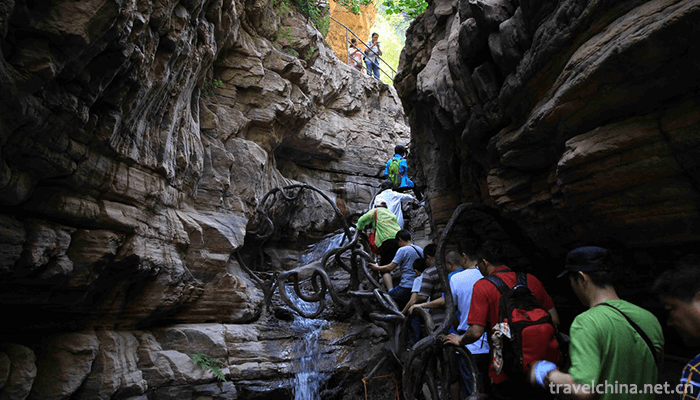
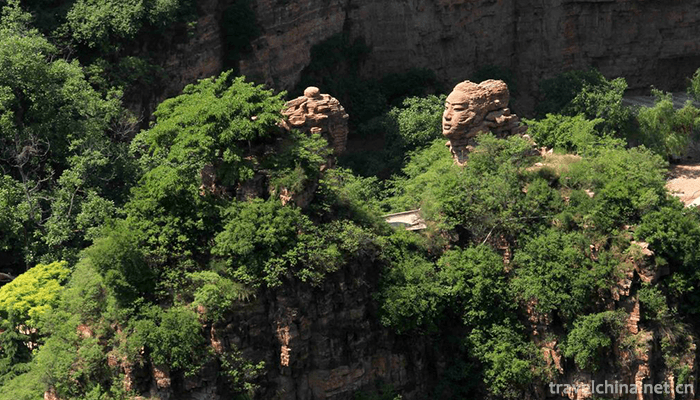
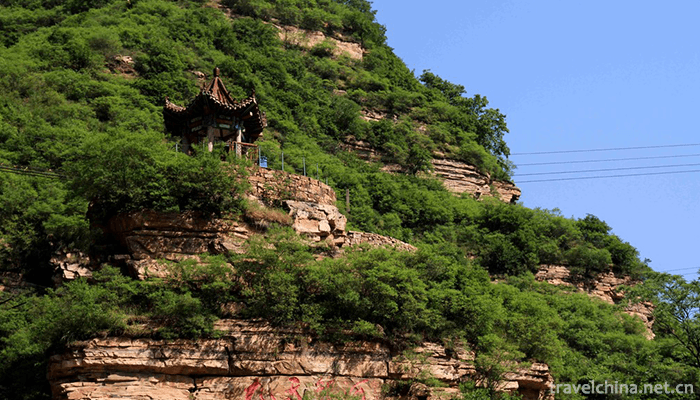
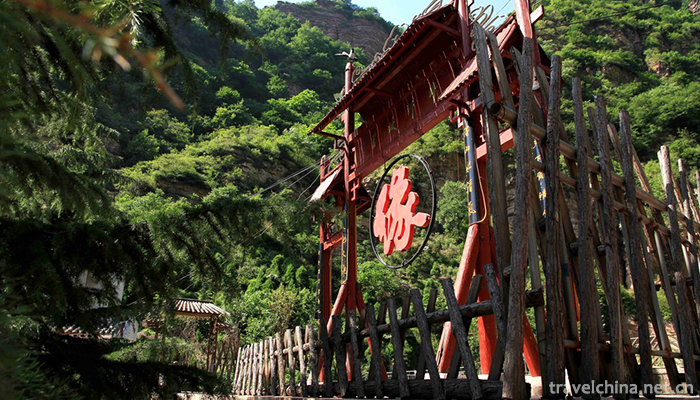
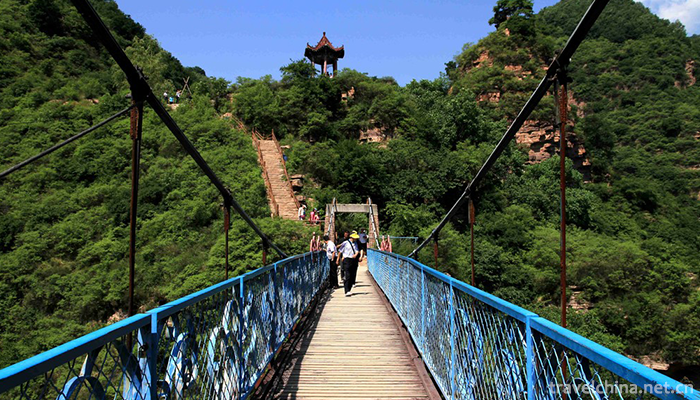
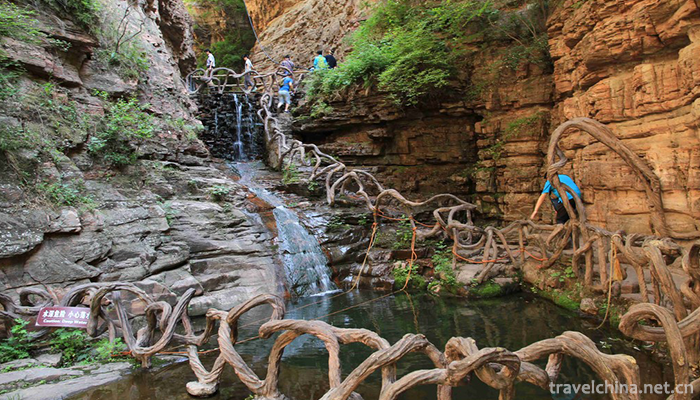
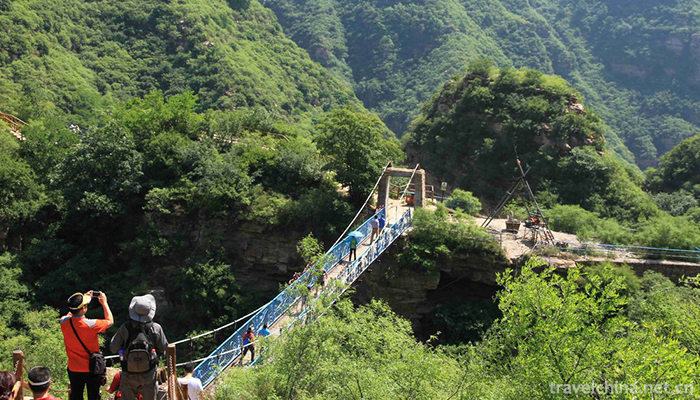
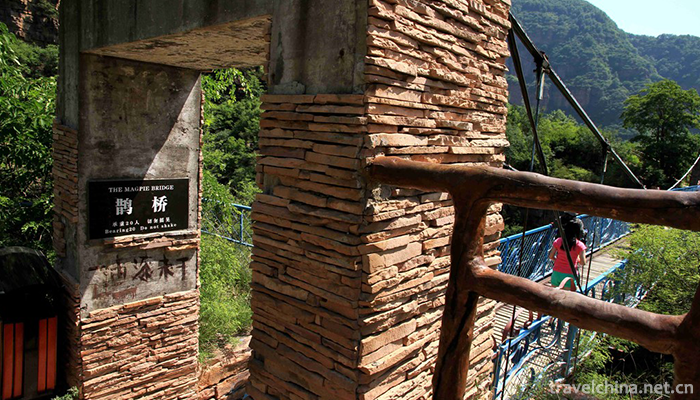
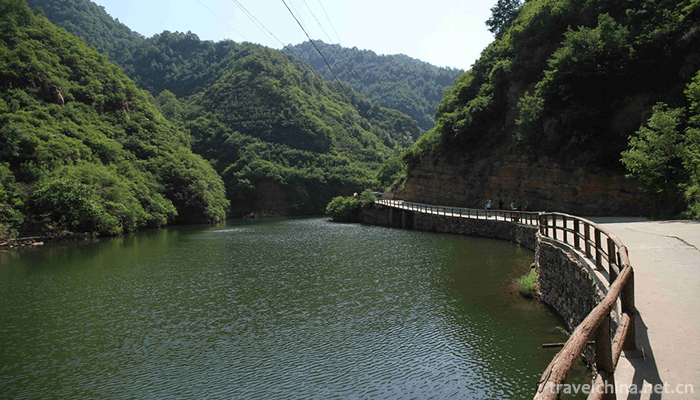
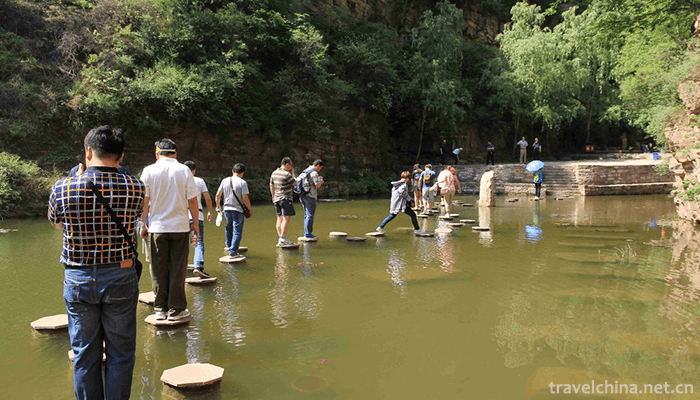

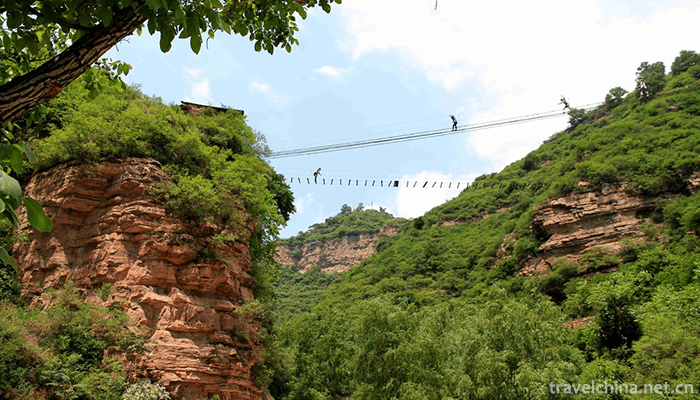
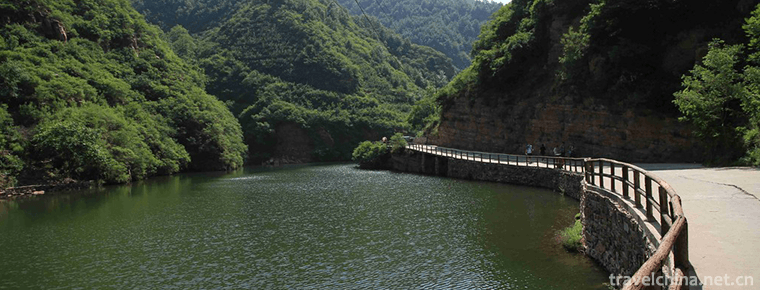
-
1.Gudou Hotspring Resort
Xinhui Gudou Hot Spring Resort is located in Gudou Scenic Area, 55 kilometers away from the Capital City, 5 kilometers away from the entrance and exit of Xinhui Cliff South Section of the West Coastal
Time 2019-02-25 -
2.Traditional fragrance making techniques
Fragrance, originated from herbs, not only fragrance overflowing nose, but also eliminating pollution, curing illness, recuperating body and mind, in a relaxed and happy heart, helping people calm dow
Time 2019-04-21 -
3.Cloisonne Production Techniques
Cloisonne production skills, Chongwen District, Beijing, local traditional skills, one of the national intangible cultural heritage.
Time 2019-05-08 -
4.Li nationality firewood dance
The firewood dance is one of the representative folk dances of the Li nationality. It is called "Turn Brake" and "Taisha" in the Li dialect. It originated from the funeral custom o
Time 2019-05-12 -
5.A tune of mountain climbing
Mountain climbing tune, also known as mountain climbing song and mountain song, is a traditional short-tune folk song popular in the agricultural and semi-agricultural and semi-pastoral areas of centr
Time 2019-06-08 -
6.Three stick drum
Sanwanggu is a kind of folk singing form widely spread in Youyang of Chongqing, Yongshun County of Longshan County in Western Hunan, Zhangjiajie and Wuyang, Tianmen and Enshi Prefecture in southwester
Time 2019-06-12 -
7.Suzhou embroidery
Suzhou embroidery is the general name of embroidery products in Suzhou area. Its origin is in Wuxian, Suzhou. Now it has spread all over Wuxi, Changzhou and other places. Embroidery and silkworm reari
Time 2019-06-17 -
8.Inkstone making skills
Inkstone making skills, local traditional handmade inkstone making skills in Shexian County of Anhui Province and Wuyuan County of Jiangxi Province, is one of the national intangible cultural heritage
Time 2019-07-01 -
9.University of Electronic Science and Technology Of China
Located in Chengdu City, Sichuan Province, the University of Electronic Science and Technology, formerly known as the Chengdu Institute of Telecommunication Engineering, was deployed by Premier Zhou E
Time 2019-08-31 -
10.Seven Star Mountain tower
The Seven Star Mountain tower, commonly known as the black tower, was built in the Jiajing period of the Ming Dynasty (1522-1566). It is the brother tower of Dongshan white tower. It is on a peak of Qixing mountain in Taba village, Nanguang Town
Time 2020-10-16 -
11.Ganzi Zanba
"Zanba" is the Tibetan transliteration of fried noodles. It is a staple food that Tibetan people must eat every day. If you are a guest of Tibetan compatriots' homes, the host will bring you fragrant milk tea and highland barley fried noodles, golden butter and milk yellow "Qula" (casein) and sugar stacked on the table.
Time 2020-12-06 -
12.medical and health work
By the end of 2019, there are 2139 medical and health institutions with 19943 beds. At the end of the year, there were 14351 technical personnel in hospitals and health centers, including 4839 licensed doctors and 6767 registered nurses. The numbe
Time 2020-12-18